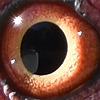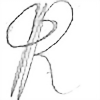HOME | DD
 TheBootesArtVoid — Male Gang-gang Cockatoo Profile (Enclosure)
TheBootesArtVoid — Male Gang-gang Cockatoo Profile (Enclosure)

#animal #animalphotography #animals #australia #australian #australiananimals #australianwildlife #bird #birds #cockatoo #natural #nature #naturephotography #parrot #parrots #photo #photography #australianbirds #birdphotography #parrotbird #australianart #parrotlovers #thebootesartvoid
Published: 2024-04-02 19:12:45 +0000 UTC; Views: 1657; Favourites: 108; Downloads: 0
Redirect to original
Description
Species Name: Gang-gang Cockatoos
Species Latin Name: Callocephalon fimbriatum
Female Name: Hen
Male Name: Cock
Baby Name: Chick
Native To: Austrlaia
Located in: Along the coast and a little further inland for Victoria, south eastern New South Wales, and the far south east portion of South Australia.
Habitats: Located in wetter forests and woodlands, from sea level to further inland. In its range it can be located in timbered foothills, valleys, timbered watercourses, coastal scrubs, farmlands, and suburban gardens.
Size (length): 320 – 370 mm (12.6 – 14.6 inches)
Wing span: 237 – 264 mm (9.3 – 14.6 inches)
Bill size: 28 – 33 mm (1.1 – 1.3 inches)
Weight: 230 - 334 grams (8.1 – 11.8 ounces)
Lifespan: 50 years
Group size: These birds can often be seen in small groups outside of breeding season and can form large flocks at their food and water sources. During breeding season these birds will tend to either be in pairs or in large family groups or 'crèches' where several breeding pairs will nest close together.
Diet: Gang-gang Cockatoo's will feed mostly on the seeds of native trees and shrubs. They will also feed on the seeds of introduced varieties preferring wattles, eucalypyts and introduced hawthrowns. They will also eat berries, nuts, fruits, insects and insect larvae.
Lifestyle: Arboreal, altricial, terrestrial, oviparous.
Migration Behaviour: Partial migrant
Group Name: Flock, company, pandemonium
Voice: These birds have a short, raven like conservational growl when they are feeding or loafing. During flight they let out a loud, stuttered, and creaky growl with a rising inflection to their voice at the end of the call which can be likened to the sound of a rusty hinge.
Mating Behaviour: Gang-gang Cockatoo's are monogamous and paid up for life. They will typically return to the same tree each year to breed. Both parents will help incubate and feed the cheeks until 4- 6 weeks after their young have fledged.
Reproductive Season: August - January
Nest Description: Decayed debris in tree hollow in dense woodland or forest.
Eggs Per Clutch: 2 Eggs
Egg Description: White and rounded.
Egg Size: 36 x 30 (1.4 x 1.2 inches)
Incubation Period: 24 – 30 days
Independent Age: 12 – 14 weeks
Sexual Maturity: 4 years
Scientific Classification:
Domain: Eukaryota
Kingdom: Animalia
Phylum: Chordata
Class: Aves
Order: Psittaciformes
Family: Cacatuidae
Genus: Callocephalon
Description:
Gang gang cockatoo's are meidum sized cockatoo's that are covered in grey feathers that are tipped in a lighter grey colour at the tips of their feathers. They have short dark grey legs and feed, large rounded light grey beaks, and brown eyes. Males will have bright red feathers that cover their entire head and the females will have light brown edges to their feathers instead of light brown along their chest and stomach. Both males and females will have a flimsy forward pointing crest.
Behaviour:
During the warm parts of the day they will rest in leafy trees to avoid the heat of the sun. During the rain and snow showers they may perform aerobatics in the air. These birds are powerful fliers but they will usually only resort to short flights from one tree to another. During flight these birds beat their wings slowly in an owl-like fashion. Their aeorabatic flights consist of them circling above the tree line as they swoop down occassionally amongst the trees. When flying at longer distances they will fly much higher, ending their trip by spiraling towards the ground whilst twisting and turning. Typically these birds will be seen closer to the ground as they forage for food or to drink.
Population (approximate): Above 10,000
Population Trend: Increasing
Conservation Status: Vulnerable – least concern
Potential threats and conservation: Some sources indicate that the bird is listed as Vulnerable where others indicate them as least concern according to the IUCN. It appears for the time being that their numbers are increasing, whilst the population has not been quantified it is believed the number of mature adults is over 10,000. These birds are under threat from land clearing and removal of mature trees which these birds use as nesting sites.
Further Reading (general information):
Wikipedia: en.wikipedia.org/wiki/Gang-gan…
Australian Museum: australian.museum/learn/animal…
Backyard Buddies: backyardbuddies.org.au/backyar…
Ebird: ebird.org/species/gagcoc1
Birdlife: birdlife.org.au/bird-profiles/…
Animalia: animalia.bio/gang-gang-cockato…
Book References:
The Australian Bird Guide Revised Edition published by CSIRO Publishing
Birds of Australia published by DK Nature Guide
The Field Guide to the Birds of Australia published by Harper Collins
The Slater Field Guide To Australian Birds Second Edition by Peter Slater, Pat Slater, and Raoul Slater
Related content
Comments: 14

👍: 1 ⏩: 1

👍: 1 ⏩: 1

👍: 1 ⏩: 0

👍: 1 ⏩: 1

👍: 0 ⏩: 1

👍: 0 ⏩: 0

👍: 1 ⏩: 1

👍: 0 ⏩: 0

👍: 1 ⏩: 1

👍: 0 ⏩: 1

👍: 1 ⏩: 0

👍: 1 ⏩: 1

👍: 1 ⏩: 1

👍: 1 ⏩: 0


























